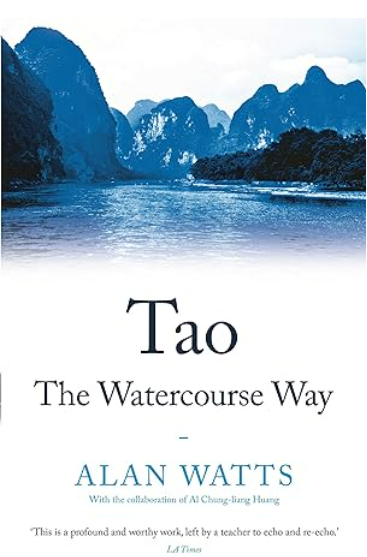
"The Watercourse Way" is a collaborative work by Alan Watts and the artist Lee Chih-chang, published posthumously in 1975. This book serves as an exploration and interpretation of the philosophy of Taoism, a Chinese tradition that emphasizes living in harmony with the natural flow of life.
The main themes and concepts covered in the book include:
1. Taoist Philosophy: The book delves into the foundational principles of Taoism, with a focus on the concept of the Tao (or Dao), often translated as "the Way." It explores the idea of living spontaneously, in tune with the natural order of the universe.
2. Harmony with Nature: Similar to the way water flows effortlessly along its course, Taoism advocates for living in harmony with the rhythms and patterns of nature. The Watercourse Way encourages individuals to align their lives with the natural flow of events rather than resisting or trying to control them.
3. Spontaneity and Simplicity: The book emphasizes the value of spontaneity and simplicity in life. It suggests that by letting go of excessive planning and striving, individuals can better connect with the essence of existence and experience a more authentic way of living.
4. Balance and Wu Wei: Wu Wei, often translated as "non-action" or "effortless action," is a key concept in Taoism. The Watercourse Way discusses the idea of achieving balance by aligning oneself with the Tao and allowing actions to arise naturally, without forced effort.
5. Cultural and Philosophical Insights: Alan Watts, known for his ability to convey complex ideas in accessible language, combines his philosophical insights with Lee Chih-chang's artistic illustrations to create a visually engaging exploration of Taoist thought.
Overall, "The Watercourse Way" provides readers with a thoughtful and accessible introduction to Taoism, offering insights into how one might approach life in a way that is attuned to the fundamental principles of the natural world.